This post may contain affiliate links. By clicking and making a purchase through the links, I earn a small commission at no extra cost to you. See my disclaimer for more information. This and display ads allow me to keep the site up to date and give back.
One of the best parts about traveling is getting the chance to see some of the amazing animals that live on this planet. We all love wildlife and want to get closer to them to learn more. But sadly, many animals are mistreated and exploited for economic benefits. With many animals on the brink of extinction, it’s more important than ever to engage in ethical animal tourism that supports wildlife conservation.
Even though the knowledge of unethical animal tourism practices increases every day, there are still far too many people who participate in these activities. According to the World Animal Protection, more than half a million wild animals are used for tourist entertainment, and three out of four wildlife tourist attractions involve some form of animal abuse or conservation concerns.
I have made my own share of mistakes over the years, unknowingly participating in unethical animal tourism. That’s why I wanted to share this post: to bring awareness to common unethical animal tourism practices, and share some tips on what to look out for so you can be sure you are engaging in ethical animal tourism on your next vacation.
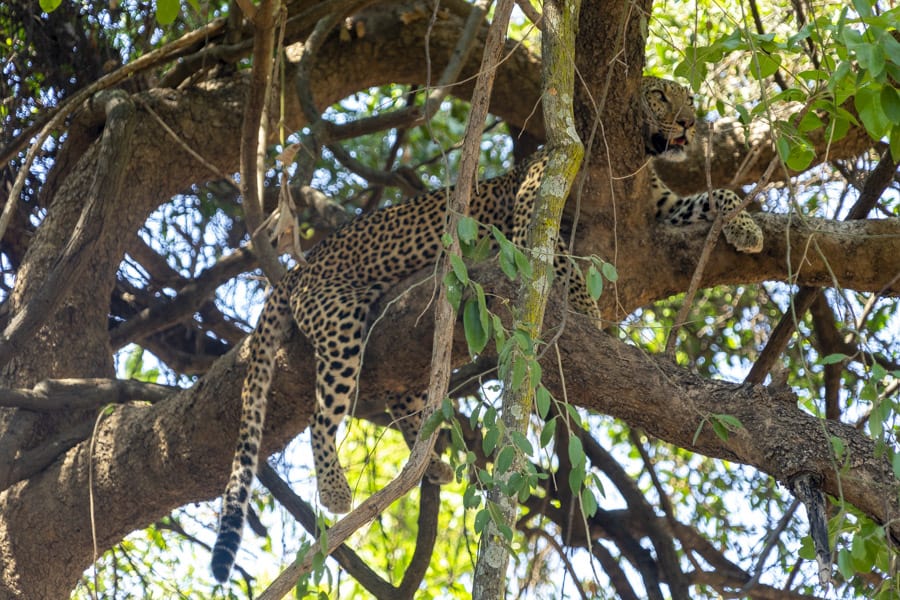
What is unethical animal tourism?
Unethical animal tourism is when tour operators exploit animals for the economic benefits from tourism. Most of the time, we don’t see that the animals are being mistreated. We see them briefly during the encounter, unaware of what goes on behind the scenes. Below, I’ve outlined some of the more common types of unethical animal tourism, why it isn’t good for the animal, and suggestions of what you can do instead.
On the other hand, ethical animal tourism has the goal of ensuring the humane treatment of the animals above everything else. The tourism aspect exists so that visitors can interact with or observe wildlife, which will in turn increase awareness and funds for conservation and protection.
The truth is, our tourism dollars decide what the markets provide. If tourists are willing to pay for these unethical activities, then the operators are going to keep providing them.
Common Examples of Unethical Animal Tourism (and what to do instead)
Riding Animals
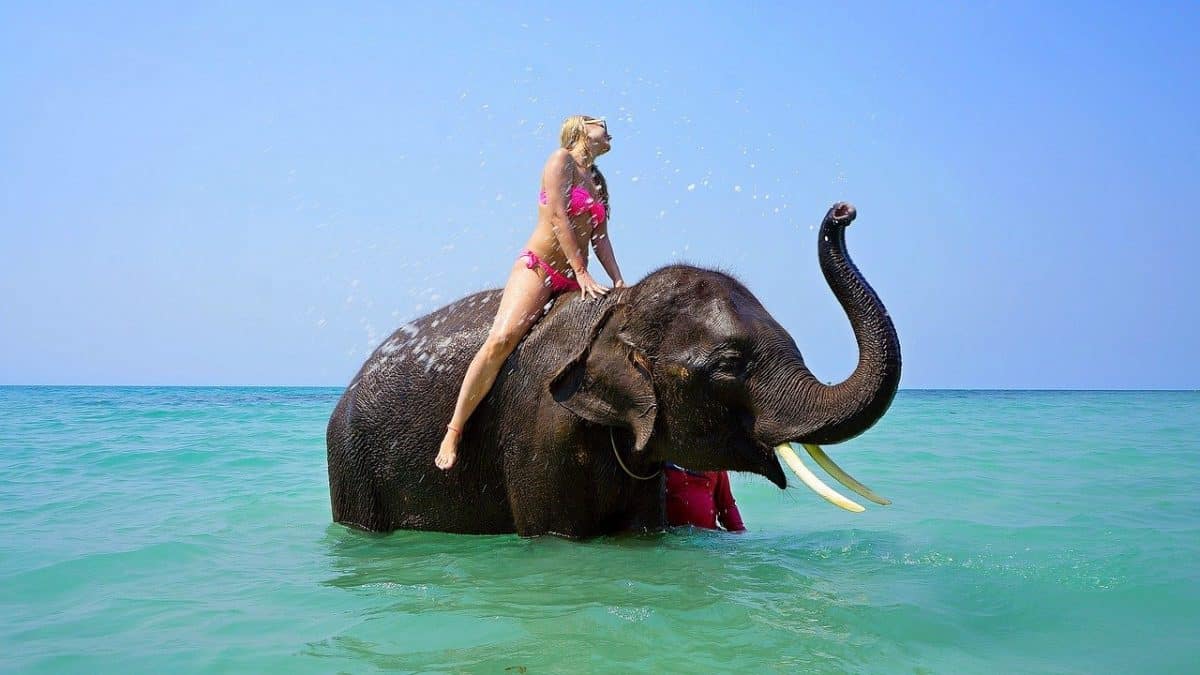
This is one of the most common types of unethical animal tourism you will see throughout the world, and I’ve done it in the past regrettably. Elephants are one of the most common animals you will see rides being offered for.
We’ve all seen it, a picture of a girl riding an elephant in Bali through the jungle – so many people want that photo. But what you don’t realize is that the elephant has to have its spirits broken to ‘tame’ it to be able to ride. It’s a long and painful process for them to get to the point where they allow you to ride them.
Luckily, there are many other amazing ethical elephant encounters out there. By choosing one of these, you will not only get to have an amazing close encounter with an elephant but feel good knowing your money is going towards the welfare and conservation of that animal.
Instead of elephant riding, go on an elephant safari at a national park or join a conservation project working with elephants. I spent two weeks in Malawi volunteering with elephants, and we got to see giant tribes of them in the wild every day. It was amazing.

Aside from elephants, you should avoid riding any animal. Whether it’s a horse, donkey, camel, or buffalo, no animal wants to be ridden by humans. Think about the conditions they are kept in – often chained up in the sweltering heat all day, waiting for a tourist to come by to pay to ride them. The people who own them often do not spend the profits on the care the animal properly needs. Instead of riding an animal, observe one in the wild.
Swimming with Captive Dolphins
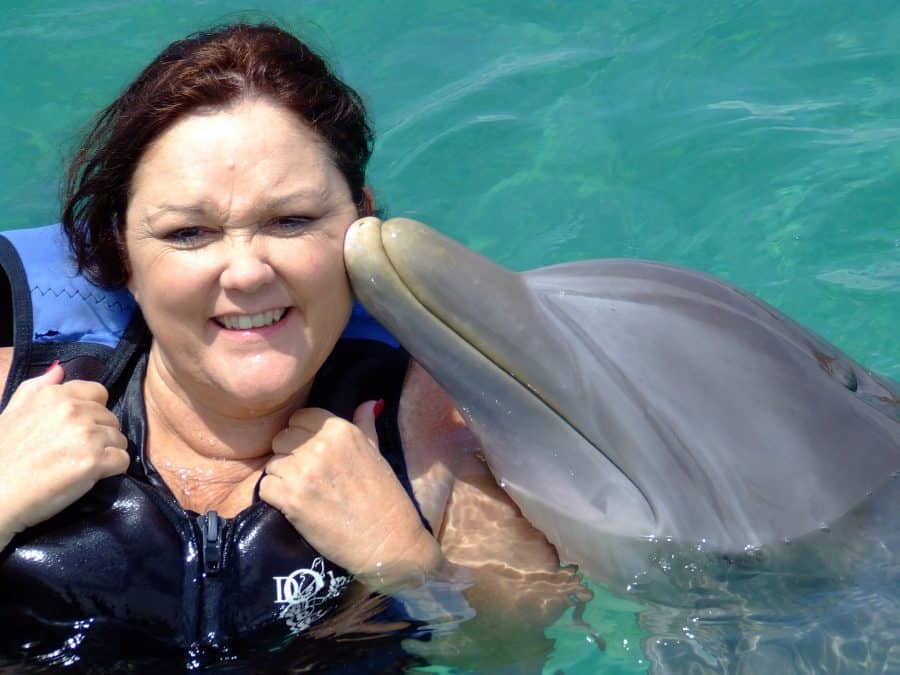
This is commonly seen around the Caribbean, and I’m guilty of doing it in Cuba many years ago before I knew better. These dolphins are captured from the wild and kept in captivity, which leads to many problems.
Dolphins are incredibly intelligent creatures. Being kept in small enclosures can lead to them developing all kinds of health issues and even psychosis, a common behavior marine mammals forced to swim in small pens all day long. This article has some horrifying statements from dolphin trainers in the Bahamas.
Instead of paying to swim with captive dolphins, search for them in the wild by becoming dive certified. While I was diving in Belize, two dolphins came and put on an amazing show for us. No, we didn’t get to ride their fins (this isn’t natural behavior) but instead watched them play with each other from a safe distance. It was a magical experience I’ll never forget.
Paying to Touch or Take Pictures with Wild Animals

Everyone loves to get good photos with animals, myself included. There’s nothing wrong with it, as long as those encounters happen in the wild from a safe distance. But sadly, many people will capture animals and keep them chained up all day so that tourists can take photos with them.
I see this one all over the world. Locals with a tied up monkey or bird with a clipped wing next to major tourist attractions, offering tourists a photo with the animal for a small fee. Snake charmers in Morroco are another common culprit.
When you pay for these photos, you’re supporting the captivity of the animal. Many are kept in tiny spaces all day and either tortured or starved to make sure they stay loyal to their owners.
Another famous example of this is the photos of tourists posing with tigers in Thailand. Think about it – would a tiger really allow you to pose with it like this? The animals are harmless and motionless because they are often drugged. Even worse, the tigers often have their teeth and claws removed to mitigate the risk of an encounter going wrong.
Instead of paying to pose with animals, visit national parks to look for wildlife on your own to take photos of. There are plenty of places to see tigers in the wild, as well as other amazing wildlife encounters. Just remember to keep a safe distance and follow the advice of your guide!
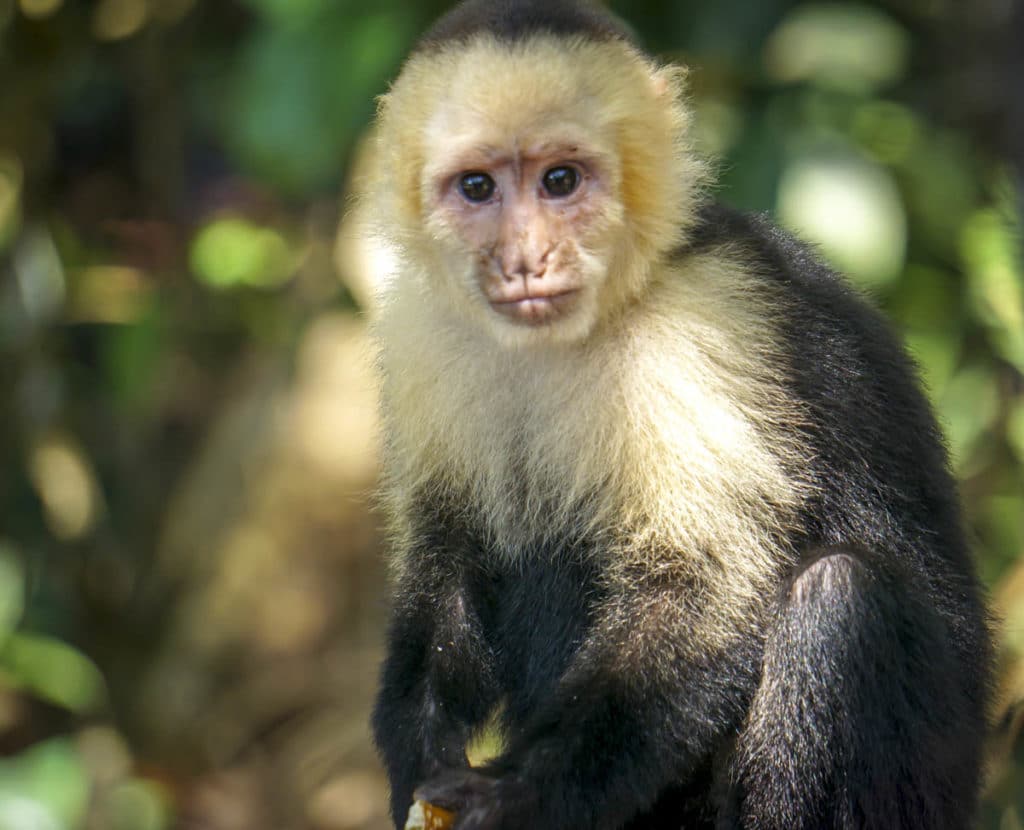
For Profit Zoos and Aquariums

There are a lot of arguments for and against zoos, but the truth is, most of these benefits are for us. The animals are often taken from their natural habitat and forced to live in small enclosures where they are not fed properly. This is especially true for carnivores, who spend most of their time pacing around due to stress.
Zoos are often thought to be educational and help with the conservation of animals, and on some level, they do. However, more often then not, the cons outweigh the pros, and many zoos choose to focus on profit rather than conservation.
It can be hard to tell the good from the bad, so instead of going to a zoo, I recommend visiting an ethical animal sanctuary. Do your research to ensure they are truly helping the animals rather than keeping them captive for tourism purposes. Look out for red flags like breeding, selling, or trading the animals. Never go to animal sanctuaries where you can touch the animals.
One sanctuary I love is La Senda Verde in Bolivia. You can visit as a guest to tour the sanctuary, or spend some time volunteering there, which I did—another one I love in the Jaguar Rescue Center in Puerto Viejo, Costa Rica.

Circus Shows & Performances that Include Animals

I can’t even believe this still exists today, but many circus shows and performances involve animals. When I was in Thailand, someone at my hostel handed me a flyer of an elephant dancing on a ball and asked if I wanted to go. I was horrified. These animals are being trained to do things that are not natural to them, purely for tourists’ amusement.
The training process for these animals is awful. They are likely removed from their mothers at birth, separated from the rest of the herd, and tortured to learn the tricks by methods like beating and starvation. Not to mention they live in tiny enclosures. Please do not support any ‘entertainment’ show with wild animals if you love animals.
Instead, watch animals in their natural habitat. Join a guided wildlife hike through a national park, or an ethical safari. There are plenty of ways to see animals in the wild. Trust me; you’ll feel a lot better seeing an animal being it’s wild, happy self rather than tortured for our ‘entertainment.’

These are just some of the more common examples of unethical animal tourism practices; there are plenty more out there. Anytime you see an animal outside of a legitimate sanctuary or wild environment, I would question how it got there and how it’s being treated. Make a statement with where you spend your tourism dollars.
Tips For Finding Ethical Animal Tourism Experiences
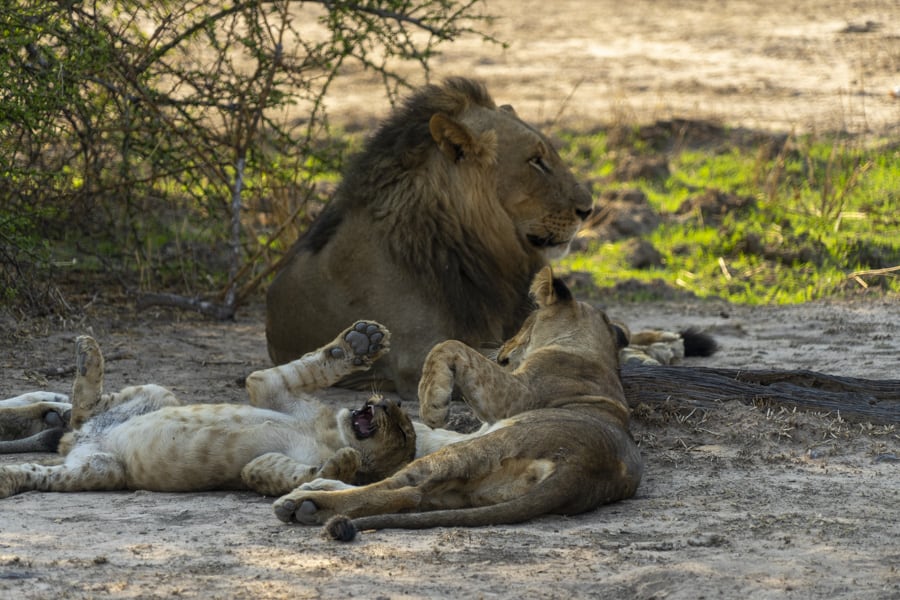
While there are plenty of unethical animal tourism experiences out there, there are also many ethical ways to observe animals without negatively impacting them. Ethical wildlife tourism experiences are becoming increasingly common because tourists are asking for then.
When choosing an animal experience on your next holiday, follow these tips to ensure it’s an ethical one.
Do your research beforehand

Thanks to the internet, it’s easier than ever to get real reviews of a place before you actually visit there. Don’t just listen to what the website says, because they may not be telling the full story. Always read reviews.
Articles from responsible travel bloggers are a great resource; otherwise, you can read Tripadvisor and Google reviews. Don’t just read the top reviews – look for the worst ones. These are where you can find welfare concerns cited by other visitors.
When researching organizations, beware of greenwashing buzzwords such as “conservation,” “sanctuary,” and “rescue.” The trouble is, both ethical and unethical organizations use these words, so it’s important to do further research to ensure they are truly benefiting the animal.
If it mentions on the website or in the reviews that you can touch, hold, feed, swim, ride, bait, or take selfies with the animal, then stay clear. These are not conducive to an ethical animal encounter, and you should look elsewhere. There are some exceptions to this, such as sanctuaries where animal feeding may be allowed, but trained professionals should always do this.
You can also look at international certifications such as the Fair Trade Tourism certification to reaffirm if a tour operator is ethical or not. If you still aren’t sure, you can also ask the company what their policy on ethical animal tourism is.
If you’re traveling with a tour company for a whole trip, make sure it is a responsible one. I recommend both G Adventures and Intrepid, as I know they both engage in ethical wildlife encounters on their tours.
Scan the environment

For any wildlife encounter with a tour operator, you should ensure that they provide basic well-being conditions for the animal. The American Society for the Prevention of Cruelty to Animals lays out five freedoms that must be present if animals are in humans care. This includes freedom from hunger and thirst, discomfort, pain, injury or disease, fear, distress, and the freedom to express normal behavior.
Look out for big red flags such as animals being chained, performing, and interacting with tourists by giving rides, being washed, and posing with them. These are not normal activities for a wild animal, so the tour operator is likely exploiting animals for tourism in these situations.
Keep it Wild
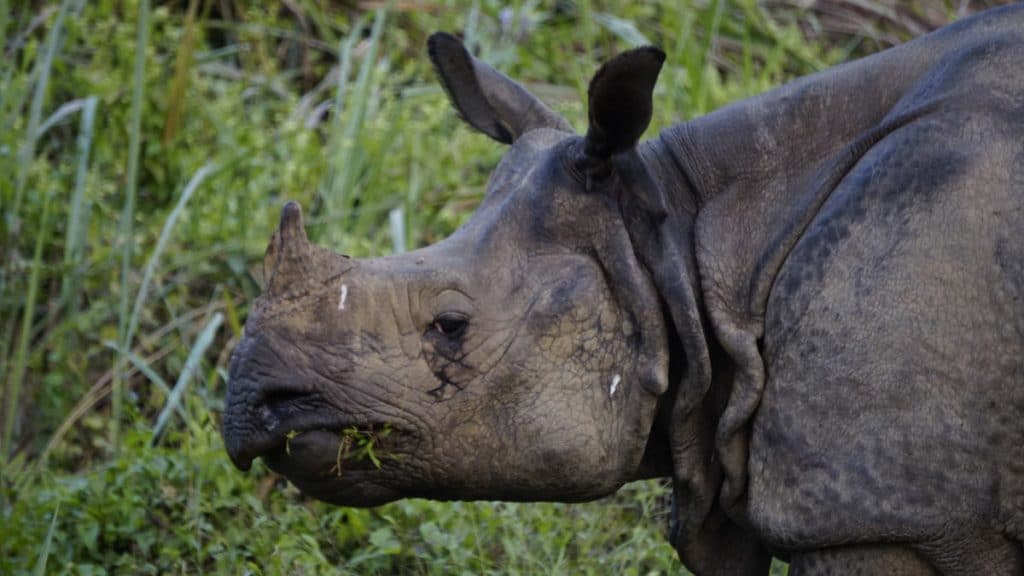
The best way to ensure an ethical wildlife encounter is to seek out experiences that offer observations of animals engaging in natural behaviors in their natural environments.
National parks are a great place to look for wildlife, but you should always ensure the park is involved in conservation work for the animal. Some safaris will crowd the animals all day in jeeps, and this isn’t good for them either.
Another great way to ensure an ethical wildlife experience is to give back by volunteering with wildlife, either at a reputable sanctuary or conservation project. There are many benefits to volunteering on a conservation project, for both you and the animal.
Need some inspiration? Here are some of my top ethical wildlife experiences:
- Where to see whales and puffins in Newfoundland
- Diving at Cano Island in Costa Rica
- Safari in South Luangwa, Zambia
- Where to see penguins in the wild
- Best day tours in the Galapagos
At the end of the day, it comes down to ensuring the animals are being respected. Do your research, ask questions, and use your best judgment. It’s okay if you’ve made mistakes in the past (I have too). Don’t beat yourself up. This is your chance to learn, educate others, and make better choices on your next trip.
—
If there is no money to be made, unethical animal tourism can easily disappear. Our individual actions do make a collective difference. By saying no to unethical animal tourism practices, you are helping signal to the market that consumers want ethical wildlife encounters so please do on your next trip!
Got any questions about ethical animal tourism? Let me know in the comments below!


